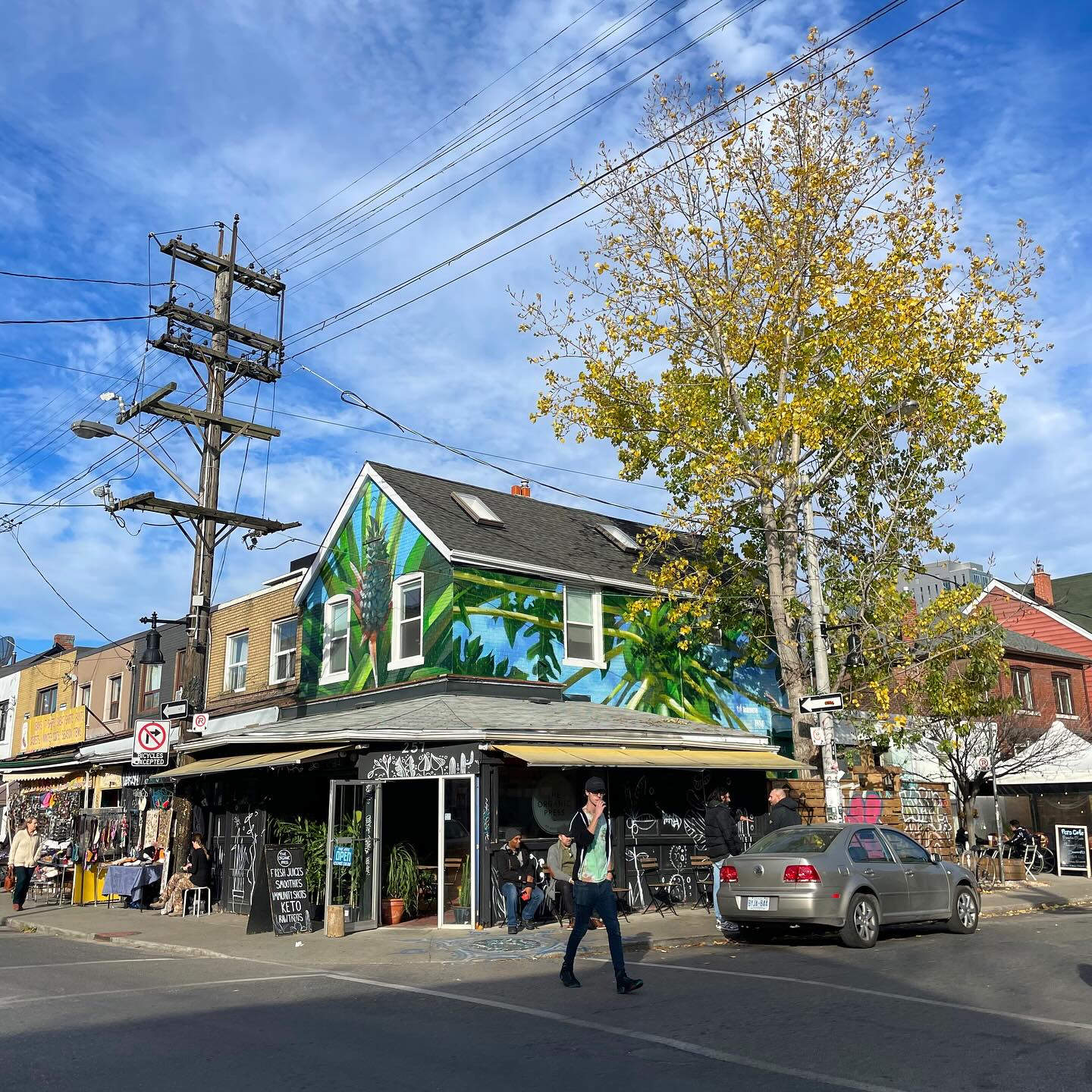On a warm Saturday morning, the neighborhood breathes in before it exhales. The first light hits painted brick walls, turning layers of graffiti and murals into a gallery that changes with the sun. Delivery vans squeeze into narrow streets. A busker tunes a guitar in front of a shuttered storefront, and the smell of fresh bread drifts from a corner bakery while the sharper scent of spices curls out from a Caribbean grocery. The Market is not quiet, but it has not reached its full hum. This is Kensington as locals know it: still waking, still unpolished, still layered with the lives of the people who have made it theirs.
No big-box storefronts line these streets. No frosted glass towers or corporate cafés intrude. Narrow, graffiti-patched lanes pulse with food, music, and memory. Kensington Market refuses to charm; it simply exists.
History in Layers
The roots go deep here. In the mid-1800s, the land was owned by George Taylor Denison before it was carved into modest lots that drew British and Irish immigrants. Their Victorian houses, some still standing, were simple, narrow, and designed for families who worked nearby.
By the early 1900s, Kensington became the center of Jewish immigrant life in Toronto. Pushcarts lined the streets, selling produce, eggs, meat, and bread. Kosher butchers and bakers worked under striped awnings. More than thirty synagogues dotted the neighborhood, and Yiddish conversations filled the air.
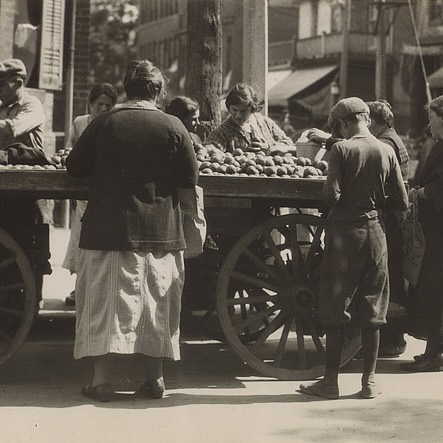
From the 1960s onward, new arrivals from Portugal, the Caribbean, and Latin America brought their own languages, music, and flavors. West Indian roti shops, Portuguese bakeries, and Latin grocers joined the street scene. Over decades, Kensington evolved into one of Canada’s most organically formed and culturally diverse neighborhoods: a blend of heritage homes, corner stores, and storefronts run by the people who lived above them.
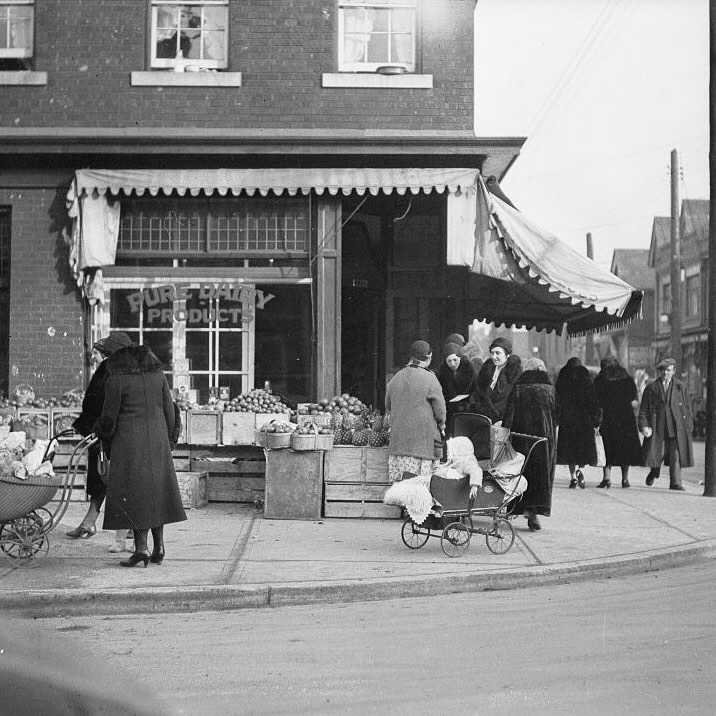
Food has always been at the core. In its early decades, the Market thrived on produce stalls, butcher counters, and egg vendors that kept the neighborhood fed. Shoppers came for weekly groceries and neighborly exchanges. Today, only a handful of produce markets remain, but the food scene still pulses, transformed into cafes, restaurants, specialty shops, and pop-ups that bring global flavors to a walkable few blocks.
Community Feel
Walking Kensington today feels like moving through a living archive. The storefronts are not designed to match, and that’s the point. Paint peels here. A window displays mismatched ceramics. A doorway frames a shopkeeper on a stool, chatting with someone who’s just there for a good conversation. These imperfections carry the truth of the place: people have lived their lives into these streets for generations, and it shows.
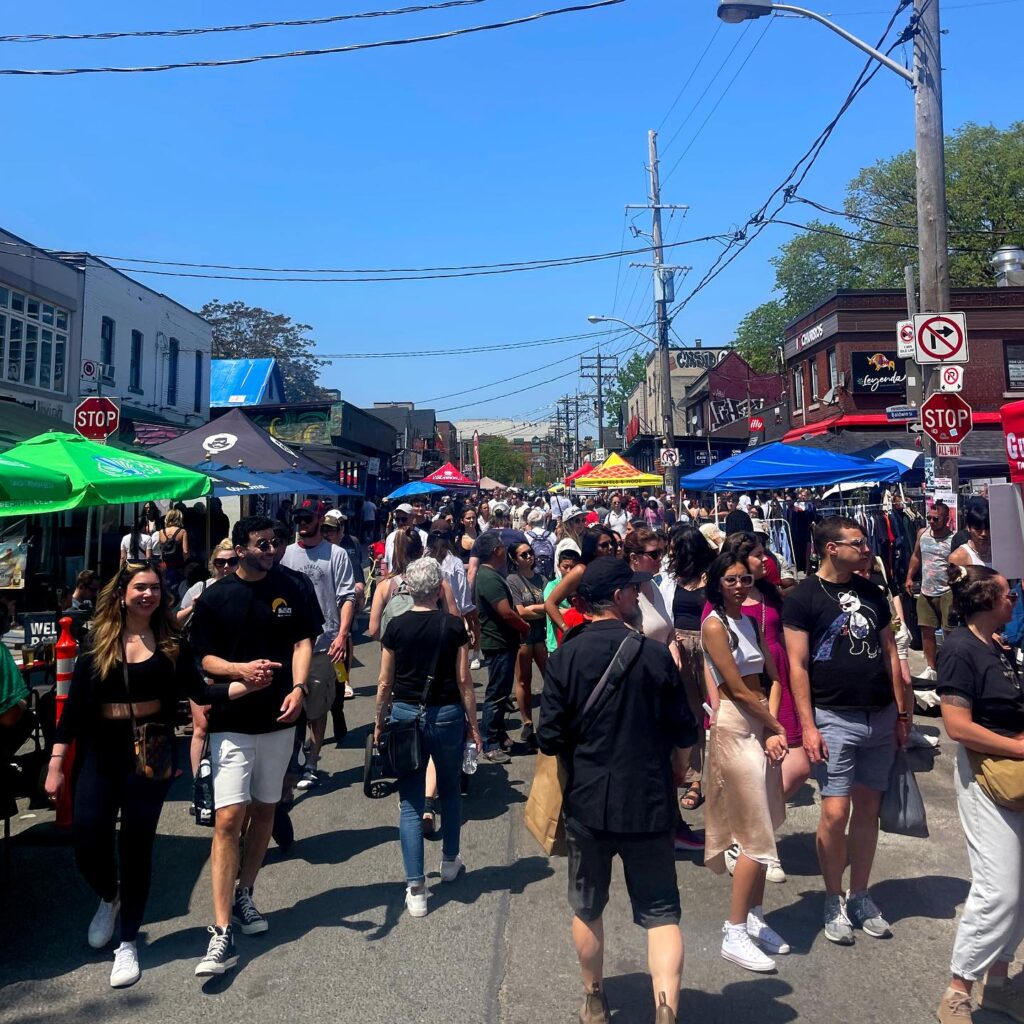
You notice how the boundaries are not sharp but instead fade gradually. From Spadina to Augusta Avenue, the hum grows denser and the smells more layered. Locals and visitors move in the same flow, stepping around crates of fruit, past alleys splashed with murals, and between cafes where the tables spill onto the pavement. Even in its grittier corners, Kensington has a pulse that keeps pulling you forward.
This is not a stage set. The character comes from daily rhythms: the vendor arranging herbs in neat bundles, the artist repainting a shutter, the grocer unpacking boxes while a neighbor leans in to talk about the weather. You feel the neighborhood folding you into its pattern.
Visiting Kensington Market Today
For someone arriving with the mindset of a local, the best way to experience Kensington is without a checklist. Start with a coffee at FIKA, tucked inside a light-filled space where pale wood and quiet corners invite a slow start.
From there, wander into 6×8 Market. Inside, stalls from local makers fill every inch with jewelry, handmade gifts, art prints, and small-batch pantry goods. It is a reflection of Kensington’s independent spirit, each table telling a small story.
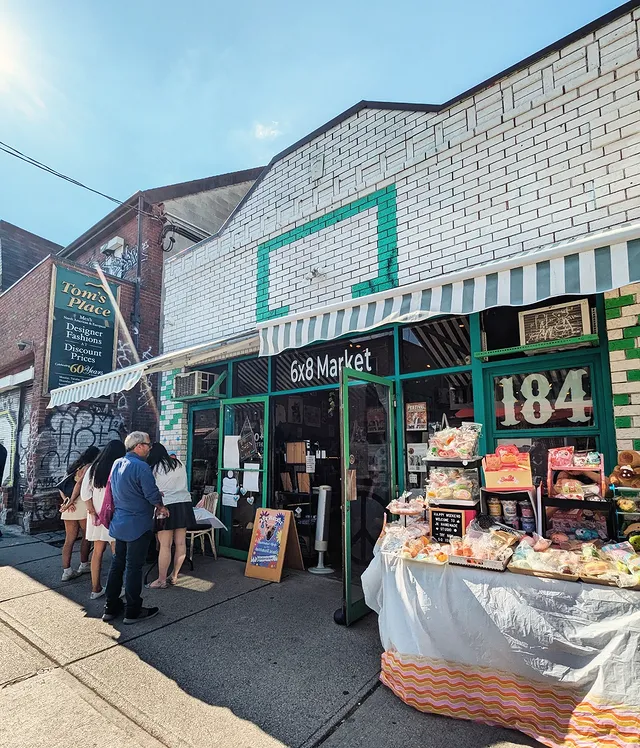
If you’re hungry, Latin Taste owned by a mother-daughter duo is worth a stop. The empanadas come hot, crisp-edged, and generously filled. The ceviche, bright with lime and cilantro, is fresh and simple. For dinner, Sunny’s Chinese offers an intimate setting and refined takes on classic dishes. It sits on the higher end of pricing, but the flavors earn the splurge.
As you wander, the Market’s geography guides you. Augusta Avenue is the neighborhood’s lively artery, lined with vintage shops, bars, and small grocers. Baldwin Street offers a quieter stretch with independent restaurants and specialty shops. The side alleys turn into outdoor galleries, their walls covered in murals that shift with time and mood. Vintage denim hangs in one window, Caribbean spices in another, and the transitions between them happen in only a few steps.
Exploring here is as much about stumbling upon what you didn’t expect as it is about seeking something specific. Step inside anywhere that catches your eye, the Kensington Market rewards curiosity.
Current Pressures and Preservation Efforts
Kensington Market has always balanced change and continuity, but in recent years that balance feels harder to hold. Luxury groceries once mingled with affordable shops. Now, when higher-end stores leave, they are often replaced by souvenir shops or cannabis dispensaries. For residents, the shift can make day-to-day life less practical, even as it continues to draw visitors.
The City of Toronto designated Kensington Market a National Historic Site in 2006, and later a Heritage Conservation District, to safeguard both its architecture and its intangible heritage. Activist groups and the Kensington Market Community Land Trust have stepped in to keep housing and commercial space affordable by buying and preserving properties for local use. These moves aim to protect not only the buildings but also the kind of businesses and residents who give the Market its personality.
Urban planning projects, such as the upcoming “Kensington Market Safe Streets” plan, will reshape how people move through the area. Wider sidewalks, more bike parking, and pedestrian-friendly streets are planned. Whether these changes can keep Kensington Market livable for residents while remaining welcoming to visitors is a question still unfolding.
A Neighborhood That Keeps Moving
The layers of Kensington Market are not only historical facts but also lived moments you can still step into. The Market resists the polish that flattens other urban neighborhoods, keeping its rhythm unpredictable, its edges rough, and its character intact. Whether you come to shop, eat, or simply walk, you are stepping into a place that carries its history and its present at the same time.
Discover another lively Toronto neighborhood near by at King and Portland.
